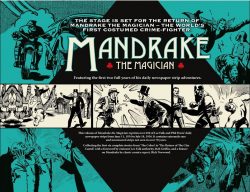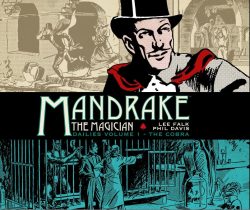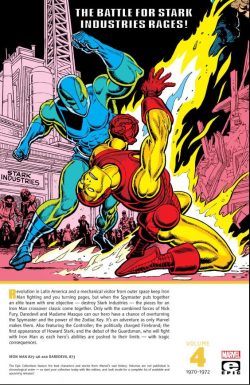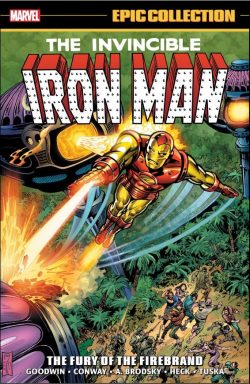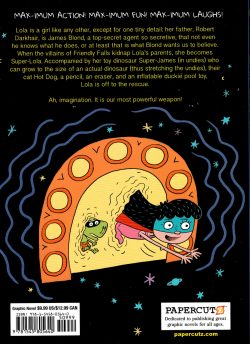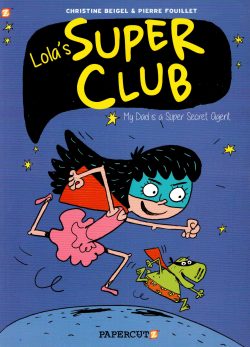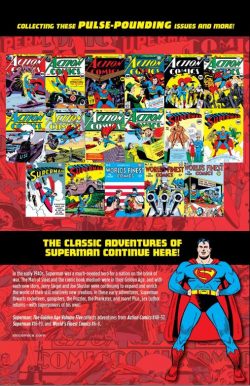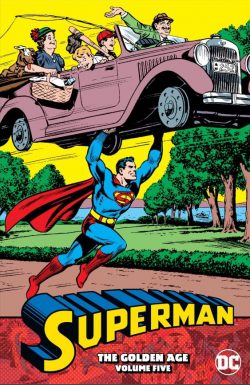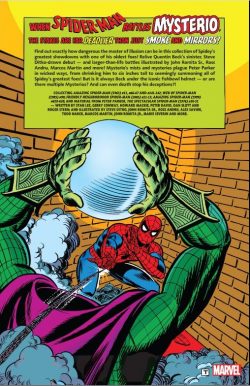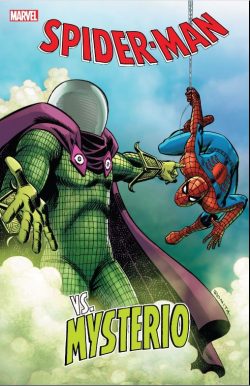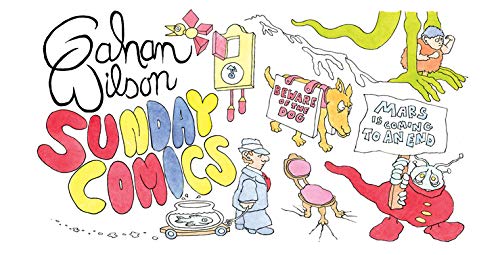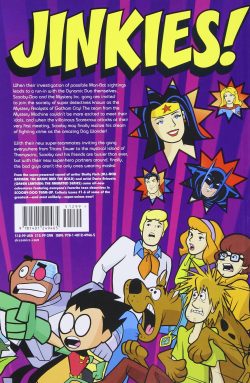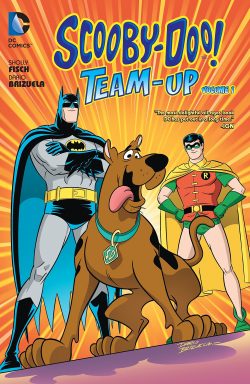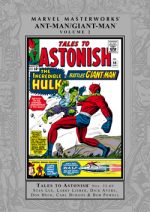
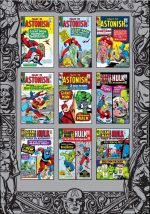
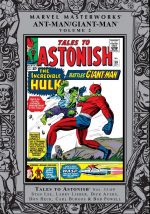
By Stan Lee, Larry Lieber, Leon Lazarus, Al Hartley, Dick Ayers, Don Heck, Steve Ditko, Carl Burgos, Bob Powell & various (Marvel)
ISBN: 978-0-7851-2911-0 (HB)
Win’s Christmas Gift Recommendation: A Little Bit of Vintage Wonderment… 8/10
If you’re of a particularly picky nature – and what comic fan isn’t? – you might consider the Astonishing Ant-Man one of the earliest heroes of the Marvel Age of Comics. He first appeared in Tales to Astonish #27 (cover-dated January 1962), in one of the splendidly addictive men-vs-monsters anthology titles that dominated in those heady days of Science Fiction Double-Feature B-Movies.
As superheroes proliferated to explosively dominate the early 1960s, he was rapidly retooled and recycled to become a key pillar of the company’s powerhouse pantheon… but not for long…
This second episodic, eclectic and entomologically edifying compendium – available in hardback and digital formats – gathers the pertinent portions of Tales to Astonish #53-69: spanning March 1964 to July 1965 and tracing the first gradual decline and fall of the “Man of Many Sizesâ€. The comic adventures herein are preceded by a typically voluble Stan Lee Introduction before the action and drama recommences.
TTA #53 led with a spectacular battle-bout rematch as our hero and his partner Janet Van Dyne are ‘Trapped by the Porcupine!’ (by Lee & Dick Ayers) and closed with the Wonderful Wasp narrating short fantasy yarn ‘When Wakes the Colossus!’ (actually crafted by Lee, Larry Lieber & Don Heck).
The next issue saw Heck illustrate the Crusading Couple’s catastrophic trip to Santo Rico and finding ‘No Place to Hide!’: trapped and powerless in a South American banana republic run by brutal commie agent El Toro. This was neatly counter-balanced by the Wasp’s sci fi saga ‘Conquest!’ by Lee, Lieber & Sol Brodsky.
An implacable old foe defeated himself in ‘On the Trail of the Human Top!’ when the psychotic mutant killer steals Giant-Man’s size-changing pills in #55, following which Lee, Lieber & George Bell produce the Wasp’s fable ‘The Gypsy’s Secret!’
A larcenous stage conjuror proves far more trouble than you’d suspect in ‘The Coming of The Magician!’ – even successfully abducting the Wasp before his defeat, which Jan celebrated by regaling us all with tall tale ‘Beware the Bog Beast!’ (Lee, Lieber & Paul Reinman) after which TTA #57 featured a big guest-star as the size-changing sweethearts set out ‘On the Trail of the Amazing Spider-Man!’, courtesy of Lee, Ayers & Reinman, with sinister savant Egghead waiting in the wings and pulling strings. A minor landmark occurred in the back of that issue as the Wasp participated in a complete solo adventure. ‘A Voice in the Dark!’, by Lee, Lieber & Chic Stone, saw Jan defeat a big burly jewel thief. It was precious little to crow over, but Marvel had finally let a lady loose on her own with no apparent riot or collapse of the macho social order. Things would certainly get better… but not soon…
These were not only signs of the increasing interconnectivity Lee was developing but also indicated that the strip was losing impetus. In a market increasingly flooded with superheroes, the adventures of Giant-Man were not selling as well as they used to or should…
Captain America cameo-ed in #58’s epic Africa-based battle with a giant alien in ‘The Coming of Colossus!’ (Lee, Ayers & Reinman), supplemented by the Wasp’s second lone hand, played this time against an old enemy in ‘The Magician and the Maiden!’ by Lee & Lieber.
The beginning of the end for Giant-Man came in Tales to Astonish #59 and ‘Enter: The Hulk!’ (Lee, Ayers & Reinman), with the Avengers inadvertently prompting the Size-Shifting Sentinel to hunt down the Green Goliath. Although the Human Top engineered the blockbusting battle, Lee was the real mastermind as, one month later, The Hulk began co-starring in his own series and on the covers, whilst Giant-Man’s adventures shrank back to a dozen or so pages. Ten issues later Hank and Jan would retire making way for amphibian antihero Namor, the Sub-Mariner…
Before then though there’s a rousing house ad and comic fact-feature ‘Let’s Learn About Hank and Jan’, leading to the first half-sized yarn. Produced by Lee, Ayers & Reinman, Tales to Astonish #59’s ‘The Beasts of Berlin!’ was a throwback in many ways to the daft old days, as the duo smuggle themselves over the Wall and into the Russian Sector to battle Commie Apes (no, really!) behind the Iron Curtain.
The writing was on the wall by issue #61. With the Hulk already most prominent on the covers, hastily-executed stories and a rapid rotation of artists, it was obvious Giant-Man was waning. ‘Now Walks the Android’ was a fill-in rather rapidly illustrated by Steve Ditko & George (Bell) Roussos, starring Egghead and his latest technological terror-weapon after which ‘Versus the Wonderful Wasp’ (by Golden Age icon Carl Burgos & Ayers) recycles an ancient plot wherein a thief steals Giant-Man’s costume and equipment, leaving the mere girl to save the day…
‘The Gangsters and the Giant’ in #63 – by Lee, Burgos & Stone – incestuously reproduces the plot of #37 with the gem-stealing Protector here re-imagined as “the Wrecker†and comes with a Marvel Masterwork pin-up of the Diminutive Duo by Chic Stone. ‘When Attuma Strikes’ (Burgos & Reinman) offers a crumb of imagination and wit as Hank and Jan split up and the heartbroken lass gets herself abducted by an undersea tyrant. This last was scripted by incredibly under-appreciated and almost anonymous comics veteran Leon Lazarus.
One last attempt to resuscitate the series came with the addition of another Golden-Age legend. Bob Powell signed on as artist for issue #65’s ‘Presenting the New Giant-Man’ (scripted by Lee, inked by Heck) wherein the Master of Many Sizes built a better costume and powers, but almost dies at the hands of a cat and spider he accidentally enlarges in the process.
With a fresh new look, the last five issues are actually some of the best tales in the run, but it was clearly too late.
Frankie (Giacoia) Ray inked Powell for ‘The Menace of Madam Macabre’, with a murderous oriental seductress attempting to steal Pym’s secrets, and Stone applied the brushes for ‘The Mystery of the Hidden Man and his Rays of Doom!’, wherein a power-stealing alien removes Hank Pym’s ability to shrink, before the series concludes with a powerfully impressive 2-parter in Tales to Astonish #68 and 69. ‘Peril from the Long-Dead Past’ and ‘Oh, Wasp, Where is Thy Sting?’, were inked by Vince Colletta and John Giunta respectively.
So far along was the decline that Al Hartley had to finish what Stan Lee started: concluding a tense and thrilling tale of the Wasp’s abduction by the Human Top and the abrupt retirement of the weary, shell-shocked heroes at the saga’s end.
(Gi)-Ant-Man and the Wasp did not die, but instead joined the vast cast of characters which Marvel kept in relatively constant play through team books, via guest shots and in occasional re-launches and mini-series.
Despite variable quality and treatment, the eclectic, eccentric and always fun exploits of Marvel’s premier “odd couple†remain an intriguing and engaging reminder that the House of Ideas didn’t always get it right, but generally gave their all to entertaining their fans.
By turns superb, stupid, exciting and appalling this tome and these tales epitomise the best and worst of Early Marvel (with the delightful far outweighing the duff) and certainly won’t appeal to everybody, but if you’re a Fights ‘n’ Tights fan with a forgiving nature the good stuff here will charm, amaze and enthral you whilst the rest could just be considered as a garish garnish to provide added flavour…
© 2020 MARVEL.

